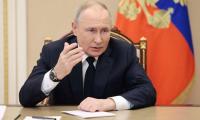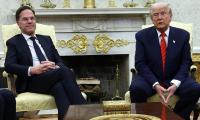Tariffs were used as a tool in these trade wars to reduce the deficit, boost local manufacturing and encourage consumers to buy American products by making imported goods more expensive through enhanced duties. Each battle uses a particular legal rationale of calling imports a ‘threat to national security’ or ‘causing injury’ to the US market provoking trading partners into real hostilities with subsequent retaliation significantly hampering global trade and investment.
After coming into power, Trump imposed tariffs on $8.5 billion in imports of solar panels and $1.8 billion of washing machines under Section 201 of the Trade Act of 1974 for being imported in such increased quantities as causing substantial ‘material injury’ to US manufacturers. The tariffs were challenged by South Korea and China through the WTO, for violating WTO rules and damaging their trade interests.
The rarely used Section 232 of the Trade Expansion Act of 1962 was invoked to announce tariffs of 25 percent on steel and 10 percent of aluminum, calling these imports as ‘threat to national security’ of the US. This targeted around $48 billion of imports from trading partners such as Canada, Mexico, European Union, South Korea and Turkey who collectively retaliated with tit-for-tat tariffs on US exports worth $24 billion in 2017. However, bowing to domestic pressure, Trump eased tariffs on Canada and Mexico to rein in commercial conflicts with its regional trading partners.
Trump continually used the threat of slapping tariffs and quotas on import of cars and auto parts, on national security grounds, to tilt the balance of trade in his favor. He called the EU and Japan “protected foreign markets” that impose significant barriers to automotive imports from the US, disadvantaging American owned producers and reducing US exports. In addition, Trump threatened tariffs to be imposed under the International Emergency Economic Powers Act (IEEPA) on all US imports from Mexico if it did not reduce or eliminate the number of migrants crossing the border illegally, an absurd manifestation of the law.
The US accused China of unfair trade practices, under Section 301 of the Trade Act of 1974, harming American intellectual property rights, innovation and technology transfer. Consequently, the US levied tariffs of 15 percent on $300 billion and 30 percent on another $250 billion of Chinese goods. China retaliated with a duty of 5-10 percent on American goods worth $75 billion and 20-25 percent on goods worth $110 billion. Trump inflated the trade war, in a bid to safeguard US semiconductor supremacy, and blacklisted Chinese telecommunications ZTE and Huawei. Likewise, American companies could not export goods and services to these companies without a licence. The export ban was expanded to include foreign companies which faced restrictions on supplying technology chips to Huawei.
These protectionist trade wars did not help Trump realize the dream of ‘America first’. There was no visible reduction in trade deficit and restoration of local manufacturing, no creation of jobs and bringing of supply chains to America as envisaged. Engulfed by an overall slow economic growth globally, the onslaught of Covid-19, and reckless tariff policies, the American economy plunged low, losing jobs in the millions, burdening consumers with expensive goods, damaging US industries, in billions, through lost output and sales and foreign buyers switching to alternate suppliers.
By slapping unilateral tariffs, under certain statutory provisions that are rarely used for this purpose, Trump aroused much criticism domestically and globally for upending the rules based multilateral trading system of the WTO. If there was material injury to domestic industry, Trump could have imposed antidumping duties and safeguard measures besides countervailing duties, under WTO, to counter the subsidized exports into their market.
Once Bidden assumes office, we will see whether the legacy of Trump’s hostile trade battles abates or not. Instead of barraging tariffs, successful negotiations with trading partners would allow long-term economic viability, and increased spending on research and development could develop cutting edge technologies to compete with imported goods.
The writer holds an LLM degree in international economic law from the University of Warwick.
Email: beelam_ramzan@yahoo.com
People of that time believed that an eclipse was a symbol of displeasure of gods
Vertically speaking, dominance of domestic debt in Pakistan’s debt portfolio is haunting
Loss of biodiversity is stark reminder that urban mismanagement is not just infrastructural failure but ecological...
Strong public warning systems can also help ensure quick evacuations in places prone to fires
PPPs in Pakistan's WASH sector face significant regulatory and policy challenges that hinder their effectiveness
Instead, it would have powerful chairman with three-year term, appointed at prime minister’s discretion







